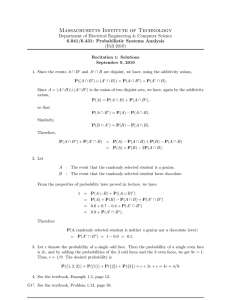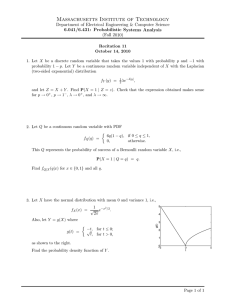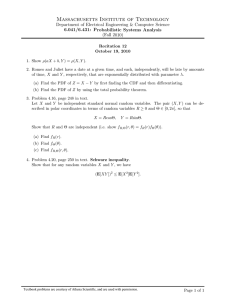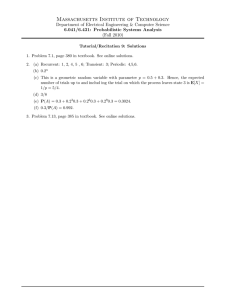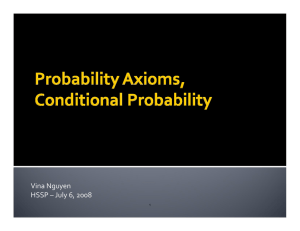Massachusetts Institute of Technology
advertisement
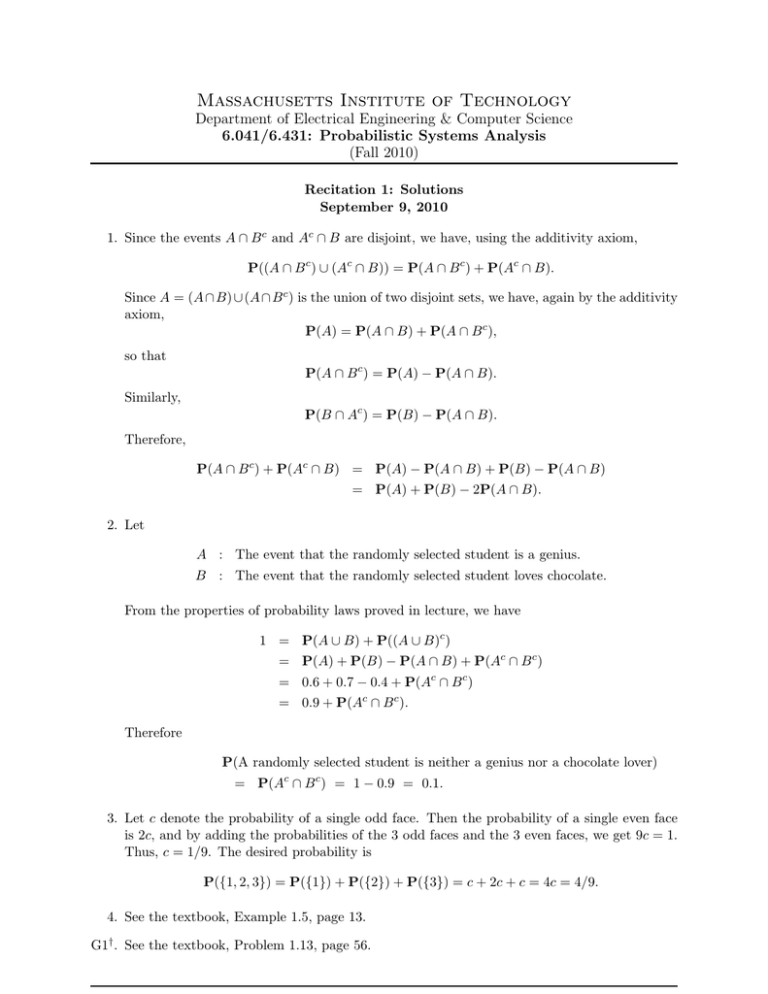
Massachusetts Institute of Technology
Department of Electrical Engineering & Computer Science
6.041/6.431: Probabilistic Systems Analysis
(Fall 2010)
Recitation 1: Solutions
September 9, 2010
1. Since the events A ∩ B c and Ac ∩ B are disjoint, we have, using the additivity axiom,
P((A ∩ B c ) ∪ (Ac ∩ B)) = P(A ∩ B c ) + P(Ac ∩ B).
Since A = (A ∩ B) ∪ (A ∩ B c ) is the union of two disjoint sets, we have, again by the additivity
axiom,
P(A) = P(A ∩ B) + P(A ∩ B c ),
so that
P(A ∩ B c ) = P(A) − P(A ∩ B).
Similarly,
P(B ∩ Ac ) = P(B) − P(A ∩ B).
Therefore,
P(A ∩ B c ) + P(Ac ∩ B) = P(A) − P(A ∩ B) + P(B) − P(A ∩ B)
= P(A) + P(B) − 2P(A ∩ B).
2. Let
A : The event that the randomly selected student is a genius.
B : The event that the randomly selected student loves chocolate.
From the properties of probability laws proved in lecture, we have
1 = P(A ∪ B) + P((A ∪ B)c )
= P(A) + P(B) − P(A ∩ B) + P(Ac ∩ B c )
= 0.6 + 0.7 − 0.4 + P(Ac ∩ B c )
= 0.9 + P(Ac ∩ B c ).
Therefore
P(A randomly selected student is neither a genius nor a chocolate lover)
= P(Ac ∩ B c ) = 1 − 0.9 = 0.1.
3. Let c denote the probability of a single odd face. Then the probability of a single even face
is 2c, and by adding the probabilities of the 3 odd faces and the 3 even faces, we get 9c = 1.
Thus, c = 1/9. The desired probability is
P({1, 2, 3}) = P({1}) + P({2}) + P({3}) = c + 2c + c = 4c = 4/9.
4. See the textbook, Example 1.5, page 13.
G1† . See the textbook, Problem 1.13, page 56.
MIT OpenCourseWare
http://ocw.mit.edu
6.041 / 6.431 Probabilistic Systems Analysis and Applied Probability
Fall 2010
For information about citing these materials or our Terms of Use, visit: http://ocw.mit.edu/terms.
